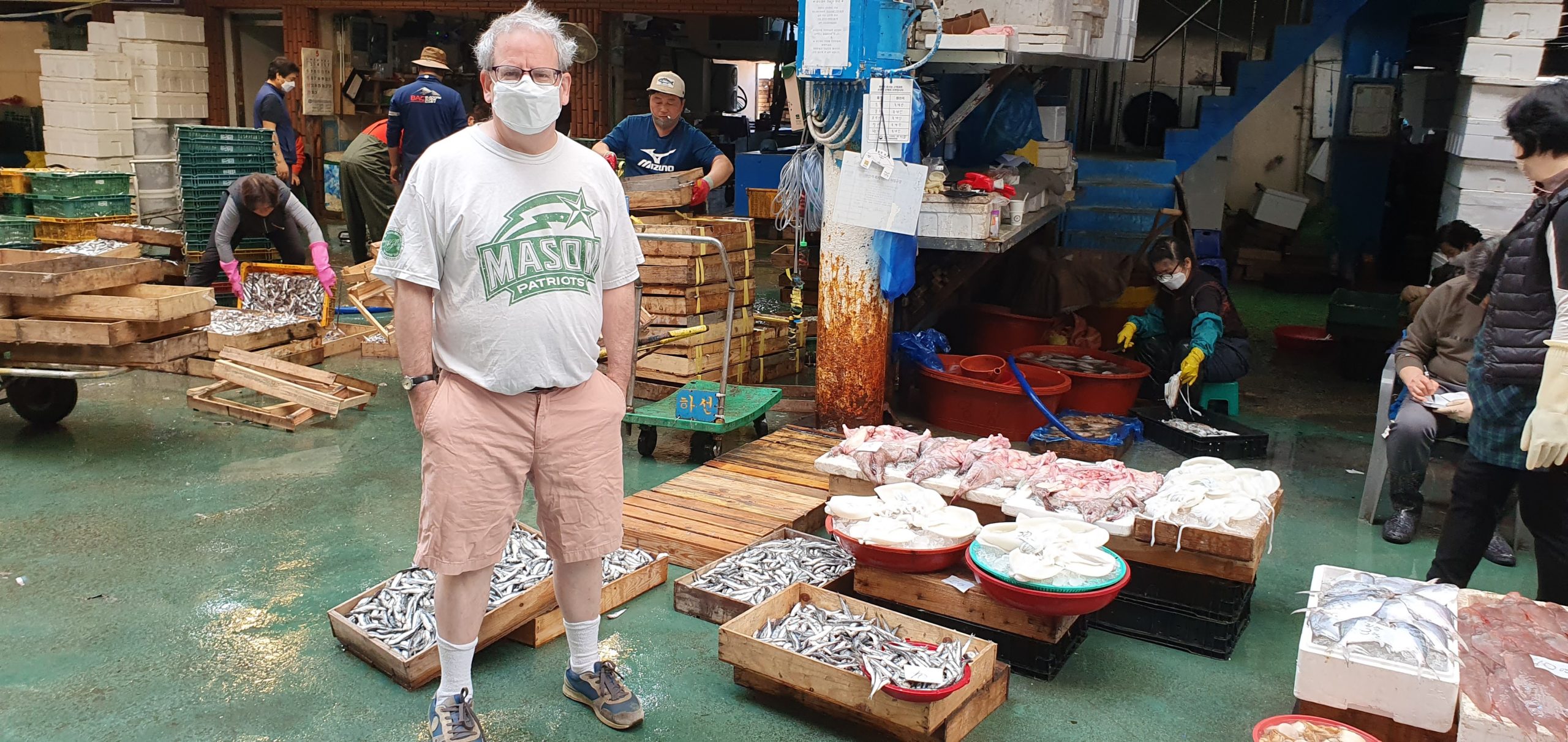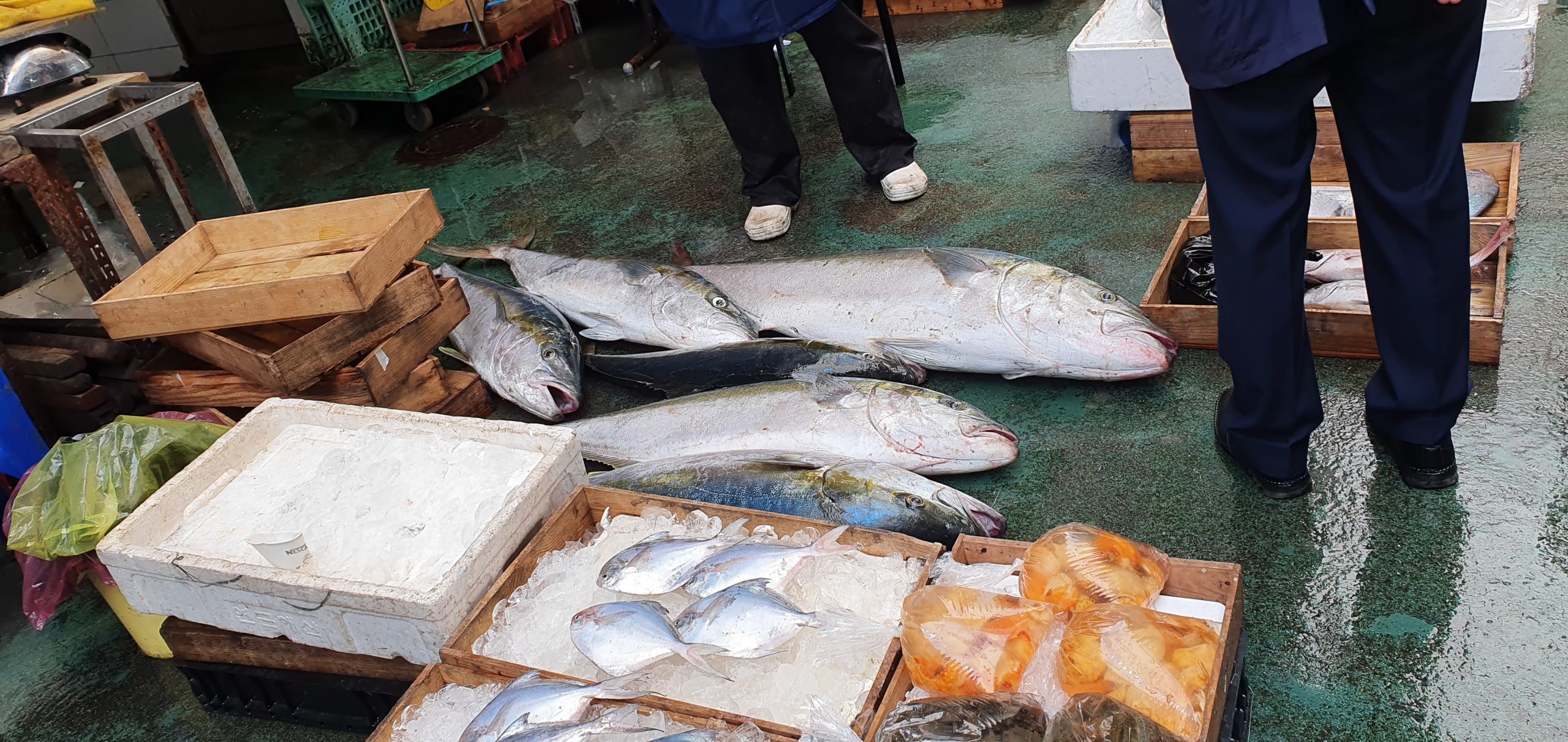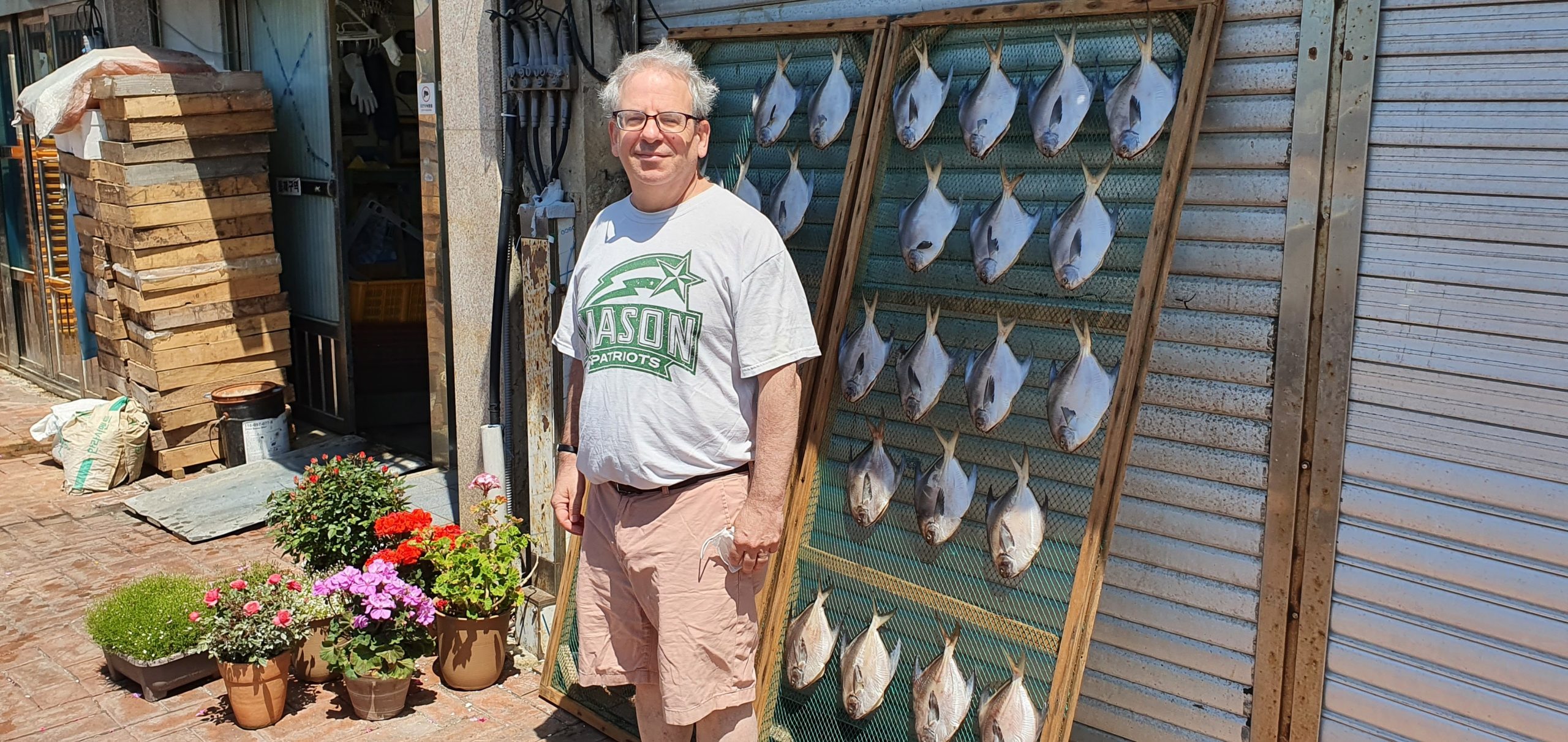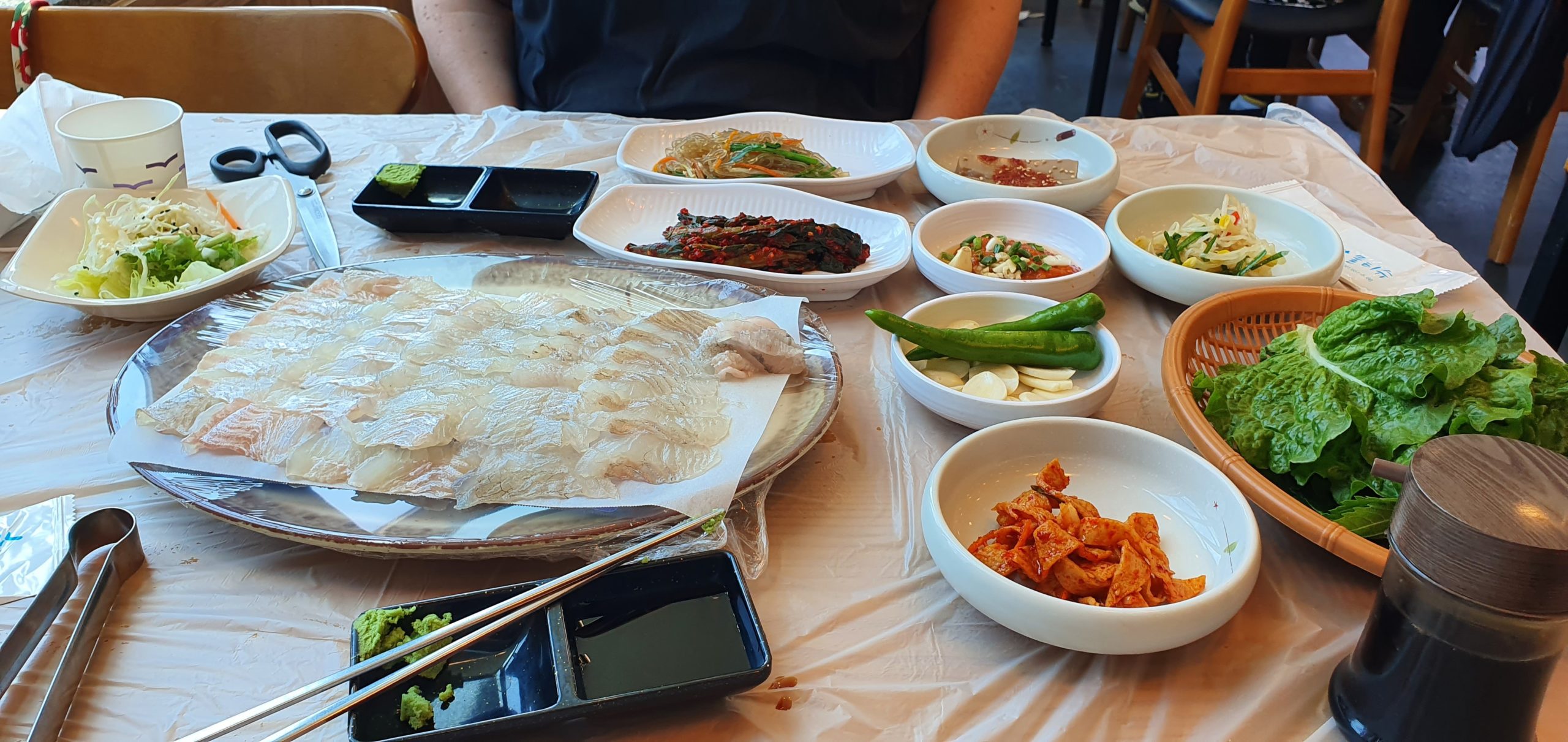I have a new favorite place to visit in Korea. Yeosu, on Korea’s southern coast, has a beautiful seacoast dotted with islands, and a climate subtropical enough to grow palm trees. It is not unlike the very popular destination Jeju Island, but has more intriguing little islands and is less touristy, more a working fishing town.
There are many reasons we had been intending to visit Yeosu, including the beautiful pictures we had seen of it and its easy accessibility from Seoul via a high-speed KTX train. A more particular reason, though, is that Yeosu was the headquarters of the famous Korean admiral Yi Sun-shin, a hero of victorious naval battles against the Japanese in the late sixteenth-century Imjin War.

There are status of Admiral Yi all over Korea, including a famous one in Seoul’s Gwanghwamun Square, But what could be more exciting than seeing the statue honoring Admiral Yi in the place from which he orchestrated his victories. The plaza contains a replica of Admiral Yi’s famous turtle ships, which were fully enclosed to protect its occupants from attack, while allowing them to attack enemy ships.


Something for everyone: Robert loves fish, and enjoyed seeing the fish marketplaces and having a fresh fish lunch (click the first photo below for extra big fish slideshow).
After lunch, we went to Ondongdo, a small island connect to the mainland by a seawall you can walk across. The island features lots of camellias, and is no doubt gorgeous when they are in bloom. We missed the main season for the blooms, which was earlier in the spring, though there were still some blossoms here and there. Even without the camellias in full bloom, the island had pretty walking paths. As usual, you can click on the first photo to see a slide show of larger images.
We made part of the journey back to the island on which we were staying, Dolsando, by a cable car that connects the mainland to the island. From the cable car observation point I took one of my favorite pictures of Yeosu’s many harbors.
Because we were staying on an island just south of the mainland, it was a bit of a trip to go back and forth to Yeosu. But it was worth it. Dolsando was very quiet. When we asked about finding a bus into town our hotel owner shook his head: “this is the country.” In truth, the buses were few on Dolsando, but with timetables and some patience we did get around mostly by bus. Robert loved this island, as its quiet beach and woods resort-town feel reminded him of summers spent in a small town on Lake Michigan.
Our hotel also had a great view of the sea, especially in the morning, as the sun rose. It was easy to wake up for the sunrise, watch it, and then go back to sleep.

As if our seaside island off seaside Yeosu were not in the sea enough, the next day we took a 25-minute ferry ride to Geumodo, an island accessible only by boat. To catch the ferry we had to make sure we got on one of those rare buses, and we did. But we got off at the wrong port, with little likelihood that we could get another bus to the right port in time. “Car.” “Come.” “Five minutes,” one of the Korean men who told us we were at the wrong port said in halting English (of course, I explained our predicament in even more halting Korean). He kindly drove us to the right port. When I offered a small amount of cash for “맥주 (beer),” he refused.
(Click a picture for bigger pictures.)
Since we arrived at the right port in plenty of time, we were able to get some coffee before leaving. We struck up a conversation with a lovely family because I overhead their little boy asking about Teresa and me speaking English. Really, I mostly just heard the word 영어로 (yeongawro), which means “in English,” and surmised the rest. My Korean is still not good enough to follow most whole conversations.
The parents’ English was quite good, and we learned that they also lived in the Seoul metro area and, like use, were visiting Yeousu for the first time. We had a delightful time talking to their sweet son, who was just beginning to learn English. It was especially fun for me. Their eight-year-old (I think six in international age; Koreans natively count age differently than we do) who had just been learning English for a few months, was still worlds better at English than me at Korean, but at least I found someone nearer to my own level, and he and I had fun trading sentences in one another’s languages. We ended up hiking a lot of the time with this family, as we walked at about the same pace. On the hike, I told the boy I would count to 10 in Korean if he would count to 10 in English. I dutifully counted to 10 in Korean, and then he took off, making it to 100 in English.
The bus, car, ferry trip to Geumodo was totally worth it. One side of the island has four hiking paths, together called the Bireonggil Trail, that hug its shore. We did the first of them. The views of steep cliffs, blue seas, and new spring greenery were fantastic. Something like halfway down the trail, there were some Korean restaurants. Teresa and I ordered a seafood pancake. Another kindness: when we went to pay, we learned that a second family with whom we had become acquainted on the ferry (they had lived 10 years in New Jersey but were now back in a town north of Seoul), had already paid for our lunch.
After lunch, our easy and wide trail became much narrower and rockier. Teresa and I joked that the mid-trail restaurants made sure it was easy to get to them. After that, hikers were on their own. A shuttle bus took us from the port to the trailhead and was scheduled to pick us up at the trail’s end three hours later for a return to the port. What with time for lunch and slower going on the second and more difficult half of the trail, we were running late. The father of the six-year-old boy heroically began to carry his son in an effort to make the bus. We decided there was no way we could make it (I could carry Teresa’s ring, but not carry her) and watched them disappear down the path.
However, neither we nor this family made the return bus. Fortunately, they had called a taxi and we shared it on the way back. Another kindness. Since there was only one taxi on the island, this was fortunate. Here’s a picture of Teresa, me and their son waiting for the taxi together.

When we got off the ferry and back on to our hotel island, one of the ferry guards in charge of offloading the boat asked us, “you are foreigners? how are you leaving the port?” The port was remote—maybe a 25-minute drive from our already rural hotel location. We told him we were taking a bus and where we were staying. With more skepticism about the island’s buses he told us he was going that way and kindly gave us a ride back to our hotel.
The people we met in Yeosu, especially on this day, were all very kind. We’d say it was the character of the people who live there, but our sample size is not big enough, and, besides, the family we hiked with and the family that brought us lunch were from our region of Korea. So it must be the place itself. How could you be anything but kind when surrounded by all that beauty?
We wish our readers much beauty and kindness in their own lives. And, Yeosu, we’ll be back.





















What a wonderful trip. People are kind to foriegners, but especially to foreigners who try to speak the language!